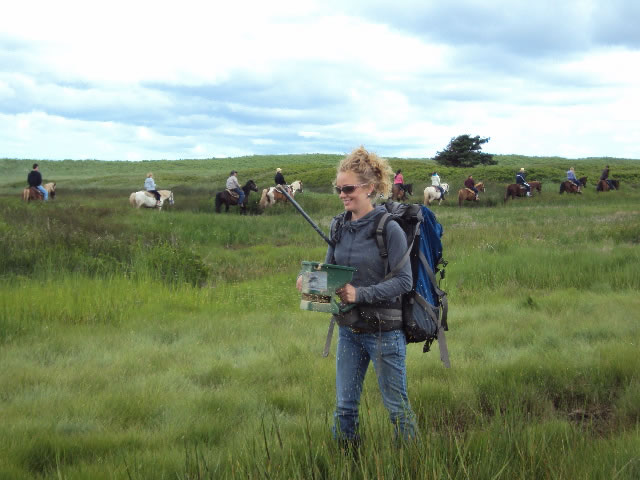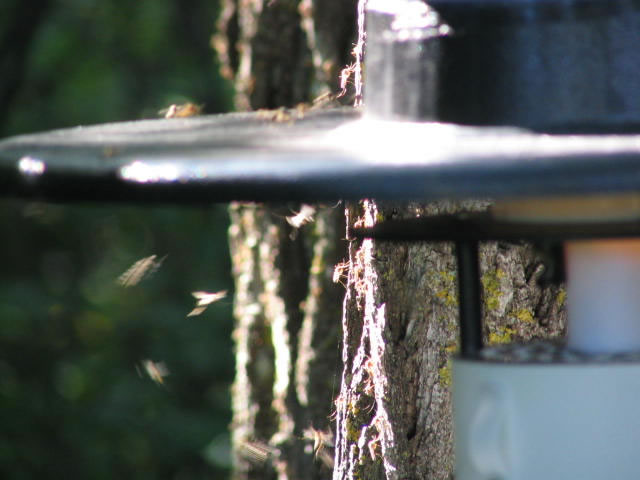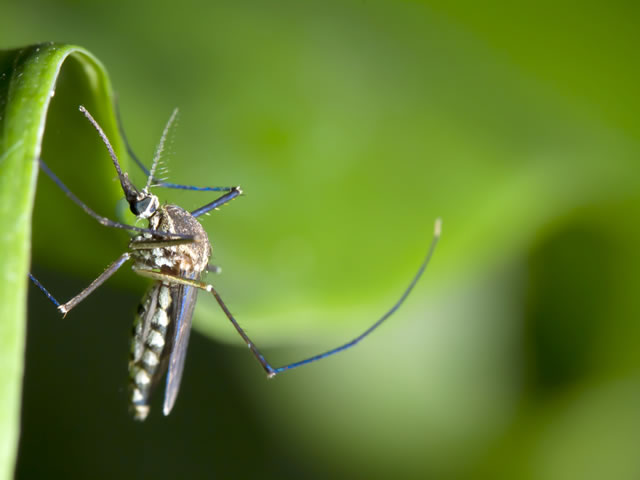Larval Mosquito Surveillance and Wetland Mapping

Mosquito larvae develop exclusively in stagnant water, however the variety of stagnant-water sites that are suitable for mosquito development is considerable. Larval mosquito habitats can be either natural or man-made. Natural habitats include such things as woodland pools, cattail marshes, swamps, sloughs and bogs. Man-made habitats include roadside ditches, storm-water impoundments, grassy depressions, ornamental ponds, and even artificial containers like discarded tires or pails, or poorly maintained bird baths, rain barrels, and swimming pools.
It is important to map the location of all standing-water sites in the community, and then to distinguish between those sites that develop significant numbers of mosquito larvae and those that do not. This understanding enables communities to develop accurate budgets and target stagnant-water sites that have the maximum impact on the mosquito population.
Larval Mosquito Control

Controlling mosquitoes in the larval, or aquatic, stage of development is usually considered the best option for controlling mosquitoes, particularly when control is required for a large geographic area, such as towns and cities. The reasons are simple. Mosquito larvae are concentrated and in well defined locations and therefore controls can be precisely targeted. In contrast, adult mosquitoes are everywhere. Mosquito larvae can be controlled using environmentally more sensitive, biorational methods; whereas adult mosquito control requires the use of more conventional products. Also, by targeting mosquito larvae, you effectively manage mosquitoes before they reach the adult or biting stage of development, and thereby successfully resolve the problem before a problem is even recognized.
Adult Mosquito Surveillance

Sampling the mosquito population provides us with important insights. We can determine the size of the problem, and we can determine where the problem is most severely located. This helps us to answer the questions of when and where to apply controls.

Sampling the mosquito population can also determine the type of mosquitoes involved, an important consideration since not all mosquitoes are created equally. There are over 75 species of mosquitoes in Canada. Some of these mosquito species are important vectors of disease, including West Nile virus. Other mosquito species are important pests that negatively impact our ability to enjoy the outdoors. These are generally referred to as nuisance mosquitoes. And some mosquito species are completely benign. The proper identification of the local mosquito populations helps us to understand their biology and therefore their importance. This helps us to make informed decisions and allows controls to be more precisely targeted, and this has the beneficial consequence of reducing costs and increasing effectiveness.
Adult Mosquito Control

Mosquitoes are a problem because of their appetite for blood and the pain associated with their bite. They can be a serious pest and can ruin an otherwise perfect summer day. However mosquitoes can be controlled, and that control can be guaranteed. In fact, controlling the adult mosquito may be the most practical solution to a problem that requires a localized result, for example a mosquito problem that might otherwise plague a golf course, a resort, or even your backyard. The application methods involved can be grouped into 2 broad categories, including the generally preferred method of a perimeter spray that effectively creates a mosquito barrier and offers very good control for about 7 days, and more lingering controls for about 3 weeks; or a general misting of the whole affected property and an immediate knock-down effect. These methods can be used singly or in combination, depending on circumstance.

It’s your yard, it’s your terms, it’s your turn to take control.
It’s time to take back the summer.
